Photographs: Reuters
The Reserve Bank of India on Thursday warned of difficult days ahead, saying inflation will remain at elevated levels for some more time while the economic growth rate will moderate in the current fiscal.
"The Indian economy needs to brace up for a difficult year from a macroeconomic perspective. With weak supply response, inflation remains an important macroeconomic challenge," RBI said in its Annual Report for 2010-11.
It said that growth is likely to remain at 8 per cent in 2011-12, lower than 8.5 per cent clocked in the previous fiscal. RBI said if the global financial condition deteriorates, it could further lower the growth projections in the current fiscal.
"Growth prospects for the year 2011-12 seem to be relatively subdued compared to the previous year due to a number of unfavourable developments. Global uncertainties have increased," the report said.
It said that persistent inflationary pressure, rising input cost, rise in cost of capital due to monetary tightening and slow project execution are some of the factors which could put pressure on growth.
. . .
HIGH prices, tough times ahead, warns RBI
Photographs: Reuters
The overall inflation in June stood at 9.22 per cent. "Inflation is likely to remain high and moderate only towards latter part of the year to about 7 per cent by March 2012," RBI said.
To sustain high growth in medium term, it was important to shore up investment, RBI said, but added that the scope for stimulus was limited. "Fiscal and monetary space is limited for any counter cyclical stimulus if global conditions deteriorate."
RBI said that there is a risk of increasing fiscal and current account deficit. It added that the US rating downgrade has increased global uncertainties and its impact on India would depend upon its effect on trade, capital flows and global commodity prices.
It further said that even as farm sector outlook remains encouraging, industrial growth is likely to decelerate.
To tame inflationary pressure, RBI has hiked key policy rates 11 times since March 2010 by a cumulative 325 basis points. This led to a rise in borrowing cost which, in turn, played a role in decelerating growth of industrial production.
. . .
HIGH prices, tough times ahead, warns RBI
Photographs: Reuters
During the first quarter (April-June), industrial output, as measured by the Index of Industrial Production (IIP), stood at 6.8 per cent as against 9.6 per cent in the same period last year.
RBI also said that monetary policy has an important role to play in bringing down inflation, but it may find it difficult to deliver the objective unless complementary policies are put in place.
The following are the highlights of the report:
Assessment for 2010-11
The Indian economy returned to a high growth path. However, challenges emerged as investment activity slowed, fiscal consolidation was led by cyclical and one-off factors, leaving its sustainability in question and inflation remained sticky on the back of new pressures.
In response, cumulative monetary tightening by raising operational policy rates by 475 bps since mid-March 2010 has been one of the sharpest around the world. The policy was tightened aggressively as high inflation would have brought down growth by itself.
Trade off for higher inflation for lower unemployment or higher growth does not work if inflation is high. The threshold inflation at which this change occurs has been empirically estimated in 4-6 per cent range for India.
. . .
HIGH prices, tough times ahead, warns RBI
Photographs: Reuters
The inflation objective of monetary policy is lower than the threshold keeping in view the welfare costs for the poor and the open nature of the economy. As such, the Reserve Bank's medium-term inflation objective has been 3 per cent. Reserve Bank's emphasis on containing perceptions of inflation in the range of 4.0-4.5 per cent
Fiscal deficit ratios in 2010-11 turned out to be better than envisaged in the Union budget. A qualitative assessment of fiscal correction during 2010-11, however, raises concerns. Capital outlay-GDP ratio fell. Improved fiscal position had a large temporary component. Clearly, a more enduring fiscal consolidation strategy is needed.
The improvement in the current account gap came about by cyclical upswing in global trade and turnaround in invisibles. This was on back of a strong pick-up in exports from November 2010 aided by diversification of trade in composition and direction. Trade policy supported exports through schemes such as DEPB.
Financial markets across the world witnessed significant deleveraging in the post-crisis period. However, balance sheet risks still remain. In India, post-Lehman crisis, regulators have taken several measures for risk mitigation, but areas of concerns remain.
A series of stress tests conducted by the Reserve Bank showed that banks remained reasonably resilient. However, risks of asset quality deterioration in infrastructure sector needs to be averted by quickly resolving the pricing and input supply issues.
. . .
HIGH prices, tough times ahead, warns RBI
Photographs: Reuters
The gross NPA ratio of scheduled commercial banks which increased marginally to 2.52 per cent by end-June 2011 still remains low. Based on unaudited results of these banks, the CRAR at 13.86 per cent as at end-June 2011 was well above the minimum requirement.
Prospects for 2011-12
Going ahead, global uncertainty, sticky inflation, hardening interest rates and high base, especially for agriculture, could moderate growth in 2011-12.
On the other hand, though global commodity prices appear to have plateaued, inflation is likely to be elevated in near term and fall only towards the later part of the year as monetary transmission works through further.
Growth Outlook for 2011-12
After above trend growth during 2010-11, growth is expected to decelerate but remain close to the trend of about 8.0 per cent in 2011-12.
If global financial problems amplify and slow down global growth markedly, it would impart a downward bias to the growth projection of around 8.0 per cent indicated in the Monetary Policy.
. . .
HIGH prices, tough times ahead, warns RBI
Photographs: Reuters
Growth prospects for the year 2011-12 seem to be relatively subdued compared with the previous year. Global uncertainties, high global oil and commodity prices, persistent inflationary pressures, rising input costs, rise in cost of capital due to monetary tightening and slow project execution are some of the factors that are weighing on growth.
Crop prospects remain good, though on a high base the growth is likely to turn out to be less than last year. The monsoon up to August 17, 2011 was 1 per cent below the Long Period Average. RBI's overall foodgrains production weighted rainfall index was 101 till August 17, 2011 (88 in the corresponding period last year). Sowing up to August 12, 2011 was marginally higher than in corresponding period of the previous year.
Downside risks to the industrial growth in 2011-12 may arise from falling business confidence, but robustness of the services sector would continue to support the growth process. There is a very strong structural dimension to services sector growth in India.
Investment may remain soft in the near term, while private consumption may decelerate. In face of moderating demand, expenditure-switching from government consumption expenditures to public investments would help.
Inflation Outlook for 2011-12
Inflation is likely to remain high and moderate only towards the latter part of the year to about 7 per cent by March 2012. The decline in global commodity prices has not been very significant. Should the global recovery weaken ahead, commodity prices may decline further, which should have a salutary impact on domestic inflation.
. . .
HIGH prices, tough times ahead, warns RBI
Photographs: Reuters
The Fed has indicated that it will pursue its near zero rate policy at least till mid-2013. It has also hinted at another dose of quantitative easing. This policy stance may keep the commodity prices elevated. The pass-through of the rise in global commodity prices till had been incomplete, especially in the minerals and oil space. As such, the benefit of a moderate fall in global commodity prices on domestic price level would also be limited.
If global oil prices stay at current level, further increase in prices of administered oil products will become necessary to contain subsidies. Fertiliser and electricity prices will also require an upward revision in view of sharp rise in input costs.
The high and persistent inflation over the last two years has brought to the fore the limitation in arresting inflation in absence of adequate supply response. However, monetary policy still has an important role to play in curbing the second round effects of supply-led inflation. In face of nominal rigidities and price stickiness, there are dangers of accepting elevated inflation level as the new normal.
Outlook on twin deficits for 2011-12
In the context of weakening global economy and the likelihood of some spillovers to the domestic economy, the twin deficits require close monitoring.
On current assessment, the fiscal deficit in 2011-12 is likely to overshoot the budgeted projections. If the economy slows down beyond what is currently anticipated, the resultant revenue erosion could magnify the fiscal slippage. At the same time, the fiscal space to support any counter-cyclical policies is more limited than what existed at the time of the global crisis of 2008.
. . .
HIGH prices, tough times ahead, warns RBI
Photographs: Reuters
On the other hand, in the baseline scenario, the CAD would remain at a sustainable level in 2011-12. Estimates of sustainable CAD suggest a threshold of 2.7-3.0 per cent of GDP. Prospects for external sector for 2011-12 remain somewhat uncertain as global uncertainties could impinge on commodity prices and exchange rate movements.
The continuance of robust performance of exports in 2010-11 and 2011-12 so far faces downside risks. The impact of growth slowdown in the advanced economies could partly be mitigated by continued diversification of exports. The impact could, nevertheless, turn material in case the slowdown in global growth is sharp and widespread.
With the US and Europe constituting the bulk of Indian software exports, some impact from a slowdown in advanced economies can be expected. Several pointers suggest that a growth could still be in line with NASSCOM target. Any downside impact can become perceptible with a lag if crisis assumes severe proportions.
As regards capital flows, the impact is more difficult to gauge. Capital flows could surge or diminish, depending upon the degree of risk aversion. If global crisis turns deep, capital flows are more likely to moderate. On the other hand, capital flows to India could increase in spells on relative returns basis and due to large interest differentials. FDI to India in Q1 of 2011-12 has doubled.
Medium-term Challenges for the Indian Economy
While the immediate challenge to sustaining high growth lies in bringing down inflation, growth sustainability over medium-term depends on addressing the structural bottlenecks. Addressing them is central to raising the potential level of growth in the Indian economy.
. . .
HIGH prices, tough times ahead, warns RBI
Photographs: Reuters
Six medium-term challenges enumerated illustratively are:
1. Lowering inflation and inflation expectations to acceptable levels. Monetary policy has an important role to play in this, but may find it difficult to deliver the objective unless complementary policies have been put in place. These include, improved supply response for food and tackling food inflation by breaking the inertial element arising from rising real wages and MSP. Rural wage programmes need to be linked with productivity.
2. Harnessing technology for agriculture productivity enhancements. This will help step up agriculture growth from a trend of around 3 per cent per annum to 4 per cent. Substantial productivity enhancements are possible through large scale introduction of Precision Farming Techniques, combined with local-specific fertigation practices, better cultivars, optimal use of biochemicals and water. Price incentives such as fertilizer subsidies have distorted its optimal use and led to suboptimal investments in its production. As such, there is a rationale for extending the Nutrient Based Subsidy (NBS) scheme in scope.
. . .
HIGH prices, tough times ahead, warns RBI
Photographs: Reuters
3. Maintaining right balance between consumption and investment. There is now a need to rebalance demand from consumption to investment by stepping up savings in the economy. In order to achieve a 9.0 per cent growth in Twelfth Five Year Plan (2012-17) the investment rate of 40.5 per cent would be required if ICOR remains unchanged from 4.5 realised during the Eleventh Plan. This requires augmenting saving as well as bringing about technological and institutional improvements to lower ICOR.
4. Facilitating energy security. India's energy deficit could double by the end of the Twelfth Plan. Demand-supply gaps could be particularly large in coal and crude oil. Price increases would be necessary to incentivise energy conservation, curb demand and support capacity addition. NELP strategy could be re-looked and coal block auctions could be front-loaded. As a large amount of bank finance is locked in the infrastructure sector, the viability of new infrastructure projects need to be ensured.
5. Facilitating infrastructure finance. India needs infrastructure investments of over US$ 1 trillion during the Twelfth Plan. It needs to be funded by both, public and private sectors. Fiscal consolidation and reorientation of expenditure towards capital expenditure is required to meet the target. Further measures are needed to improve the flow of resources to infrastructure sector on a commercial basis. More players are also needed to help corporate bond market acquire depth and vibrancy.
6. Promoting financial inclusion and inclusive growth. Long-term growth sustainability critically depends on achieving inclusive growth. Investments in agriculture, infrastructure, human capital formation through education, health and skill formation are needed. About one crore people will seek to enter the workforce each year over the next decade, posing challenges for employment and skilling. Inclusive finance is necessary for supporting the demand for these activities.
. . .
HIGH prices, tough times ahead, warns RBI
Photographs: Reuters
The Real Economy
Some moderation in growth and significant moderation in inflation from the later part of the year is anticipated going forward. However, risk to demand compression remains from likely slippage on envisaged fiscal consolidation.
Following the US sovereign rating downgrade by S&P, oil prices fell. Even with this, the August price of the Indian basket of crude is 25 per cent higher than its average during 2010-11. Empirical exercise show that a 10 percentage point increase in oil price, if passed through fully, would lead to a reduction in real GDP growth by about 0.3 percentage point. It would also raise WPI inflation by 1.0 percentage point through direct impact and 2.0 percentage points in total impact.
Preliminary estimates based on latest available information show that financial savings of the household sector moderated to 9.7 per cent of GDP in 2010-11 from 12.1 per cent in the previous year. The decline in the financial savings rate of the household sector reflected the lower growth in their bank deposits and life insurance as well as decline in investment in shares and debentures. Households' financial liabilities increased reflecting higher borrowings from commercial banks.
A holistic review of food management would be helpful in the backdrop of the National Food Security Bill (NFSB). This should cover procurement and pricing, production and food security, distribution and delivery mechanism.
Price Situation
Drivers of inflation changed during the course of 2010-11. Inflation became generalized since December 2010 with significant price pressures in non-food manufacturing commodities.
With a surfeit of liquidity, global commodity prices recovered faster than the global economy. This has become a major source of pressure on headline inflation in India during 2010-11. Empirical estimates of short run and long run elasticities suggest that despite some softening in global commodity prices in recent months, upside risks to India's inflation could persist.
Money and Credit
Money growth was moderate during 2010-11, but picked up during the last quarter of 2010-11. Currency expansion was strong during 2010-11. The growth in currency demand is explained by high GDP growth, high inflation and low deposit rates initially. Over the medium-term, increase in number of ATMs, higher social expenditures in rural areas, tax evasions could be amongst the factors. Empirically, the relationship of demand for currency with real income and prices was found to be very strong.
. . .
HIGH prices, tough times ahead, warns RBI
Photographs: Reuters
In recent years, however, the rate of decline in velocity had accelerated. Accentuated liquidity preference and slack credit demand in the aftermath of the crisis were reflected in sharp fall in velocity. The velocity of money, however, picked up in the past two years and returned to its long term trend that shows a secular decline.
Financial Markets
International financial markets witnessed frequent re-pricing of risks during 2010-11, reflecting persisting uncertainties. Sovereign risk concerns, particularly in the Euro Area, affected the financial markets for the greater part of the year.
Monetary policy transmission across the various segments of the financial markets strengthened during 2010-11 and 2011-12 so far with liquidity condition shifting to a deficit mode from June 2010.
Government Finance
Combined GFD/GDP for Centre and States fell from 9.3 per cent in 2009-10 to 7.7 per cent in 2010-11.
The budgets of the Central and State governments envisage further fiscal consolidation during 2011-12. However, concerted efforts would be necessary to avoid fiscal slippages in 2011-12, especially arising from higher expenditure on subsidies if global commodity and fuel prices continue at an elevated level. The sustainability of lower deficits requires substantial new measures leading to expenditure compression and revenue raising
External Sector
India's balance of payments improved to 2.6 per cent of GDP during 2010-11 from 2.8 per cent during the preceding year led by a pick-up in exports during the second half and a higher invisibles surplus. Thus, India's CAD is within level of sustainable CAD.
Capital flows to India improved during 2010-11, reflecting the positive perception of India's growth prospects. The composition and volatility of capital flows posed some concern. Capital flows at the aggregate level were only weakly sensitive to the interest rate differential between India and the rest of the world.
. . .
HIGH prices, tough times ahead, warns RBI
Photographs: Reuters
Financing of CAD for 2011-12 may not pose a problem unless the public debt fragilities in the Euro Zone and the growth slowdown in the US significantly impact capital flows. On the whole, the BoP situation remains manageable, though it necessitates continuous monitoring due to the global uncertainties.
Working and Operations of the Reserve Bank of India
Monetary Policy Operations
Monetary tightening, introduction of mid-quarter reviews, measures to enhance monetary policy communication, introduction of the new base rate system replacing the BPLR and the changes made to the monetary policy operating procedures helped improve monetary transmission.
The liquidity conditions changed significantly during Q1 of 2010-11. With the recovery of the economy firmly in place, the Reserve Bank moved in a calibrated manner in the direction of normalising its policy instruments.
. . .
HIGH prices, tough times ahead, warns RBI
Photographs: Reuters
During 2010-11, the centre's cash balance with the Reserve Bank and currency in circulation were key drivers of autonomous liquidity. The Reserve Bank actively managed liquidity so that neither a surplus diluted monetary transmission, nor a deficit choked fund flows.
Credit Delivery and Financial Inclusion
The Reserve Bank made sustained efforts to increase the penetration of formal financial services in unbanked areas, while continuing with its policy of ensuring adequate but viable flow of credit to priority sectors of the economy.
Financial literacy efforts of the Reserve Bank, particularly the outreach programme, generated significant interest and exuberant participation from public and banks/ financial institutions.
Regulatory actions to further financial inclusion included changes in KYC norms, relaxing branch authorization policy, widening eligible entities to function as business correspondents, and requiring minimum percentage of additional branches to be opened in unbanked rural centres
Development and Regulation of Financial Markets
The Reserve Bank initiated policy measures to address certain regulatory gaps, promote transparency and improve liquidity in the money markets with a view to further strengthen architecture while promoting greater efficiency in the financial markets.
In the derivatives market, the Reserve Bank persisted with a calibrated and sequential approach towards launching of new market instruments like Interest Rate Futures on 91-days T-bills, CDS on corporate bonds, etc.
. . .
HIGH prices, tough times ahead, warns RBI
Photographs: Reuters
The linkage between the NDF market and the domestic market is weak because corporates' domestic forex forward transaction is based on underlying exposure and there is a limit on the aggregate (cash and derivative) positions that banks can take. Empirical analysis also brings out a weak causality between the NDF and domestic market rates.
Regulation, Supervision and Financial Stability
The Indian banking system remained largely sound and resilient to shocks as indicated by various stress tests. The high level of leverage in developed countries, which was one of the causal factors behind the global financial crisis, continues to remain low in India. The regulatory and supervisory structure of the Reserve Bank was further strengthened during the year.
The important policy decisions for SCBs included, inter alia, strengthening countercyclical provisioning norms, measures to avoid excessive leverage in housing loan segment, credit support to Micro Finance Institutions(MFIs) etc. After the consolidation in the UCB sector there is substantial improvement in their financial health.
Public Debt Management
Managing the market borrowing programme for 2011-12 would be a challenge in view of tight liquidity conditions and high level of excess SLR holdings of the banks. The conduct of the market borrowing programme will be influenced by the ability of the Government to rein in the fiscal deficit and its financing by way of market borrowings at the budgeted level coupled with the monetary policy actions that anchor inflationary expectations.
The weighted average yield of dated securities rose to 7.92 per cent in 2010-11 from 7.23 per cent in 2009-10. The weighted average yield of State Government securities issued during 2010-11 stood higher at 8.39 per cent as compared to 8.11 per cent during the previous year.
Currency Management
Notwithstanding the increasing use of technology driven non-cash modes of payment, the demand for currency continues to rise.
The Reserve Bank in pursuing its clean note policy has made provision for a steady supply of fresh banknotes in response to the speedier disposal of soiled banknotes.
The economy continues to witness a compositional shift towards higher denomination banknotes. The Reserve Bank continued with its efforts to strengthen the security features of banknotes and increase public awareness so as to address the challenge of counterfeit notes.
Payment and Settlement Systems and Information Technology
Reflecting the need for technologically advanced, secure, efficient, accessible payment and settlement systems, the Reserve Bank persisted in its endeavour to incentivise electronic modes of payment.
Enhanced use of prepaid payment instruments and mobile phone based payment services have been promoted with adequate security measures in place.
Driven by the objective of reinforcing RBI as a knowledge hub, the Bank has striven towards strategic use of IT and its applications. IT Vision of the Reserve Bank of India 2011-17 was prepared by the Bank.
. . .
HIGH prices, tough times ahead, warns RBI
Photographs: Reuters
Governance, Human Resource Development and Organisational Management
The Reserve Bank has taken several initiatives in recent years covering improved transparency and governance and knowledge initiatives apart from recruitment, training of staff, schemes for higher studies and incentive schemes for attaining professional qualifications by the staff.
Some departments of the Reserve Bank were reorganised with a view to harnessing greater synergies.
As part of corporate social responsibility, several green initiatives were undertaken by the Bank
The Reserve Bank's Accounts for 2010-11 (July-June)
The balance sheet of the Reserve Bank expanded significantly during the year, mainly reflecting the impact of liquidity management operations undertaken by the Bank. On the liability side, the expansion was on account of a large increase in notes in circulation as also an increase in banks' deposits with the Reserve Bank in line with the deposit growth in the banking system.
On the asset side, there was a significant increase in Bank's portfolio of domestic assets in the form of government securities on account of open market purchases, repo purchases and disinvestment of Government of India's surplus balance parked with the Reserve Bank. The increase in foreign currency assets mainly reflected the valuation effect on the portfolio.
The income from foreign assets declined for the second successive year, reflecting the low interest rates in international markets. The decline in income from foreign assets was more than offset by an increase in earnings from domestic assets, which was mainly due to the effect of earnings on LAF operations, higher availment of ways and means advances (WMA) by the Central Government and higher coupon receipt on an increased portfolio of government securities.
The transfer of surplus profit to the Central Government amounted to Rs 15,009 crore (Rs 150.09 billion).

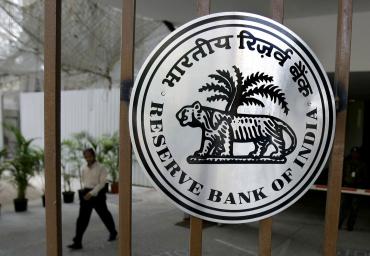
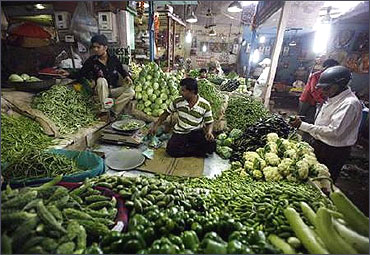
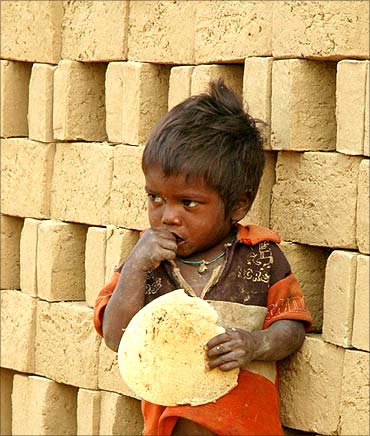
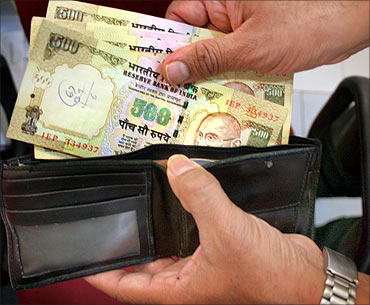
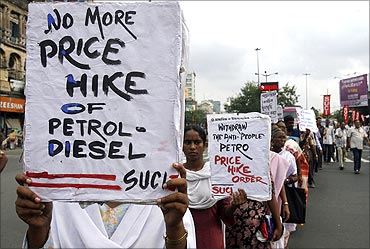


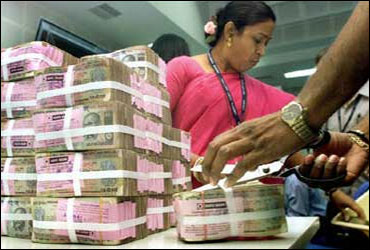
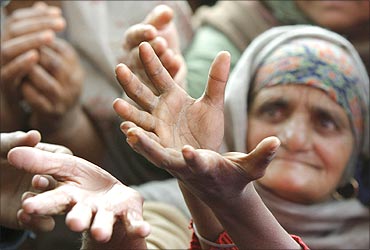

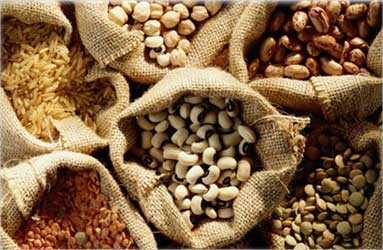
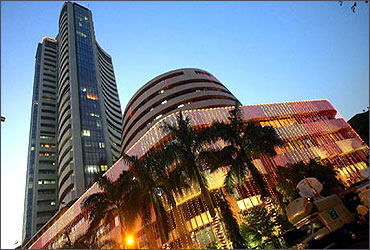
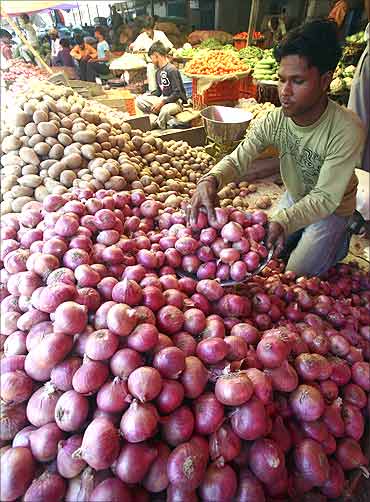
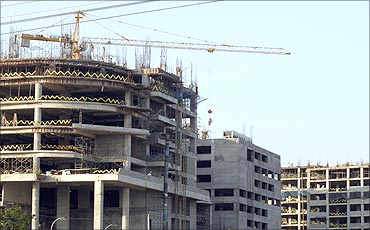
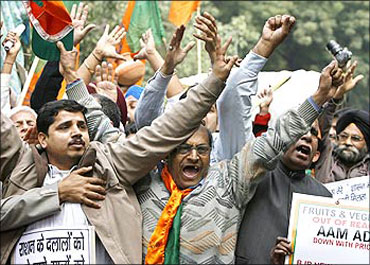
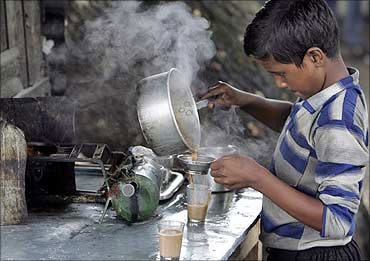
article